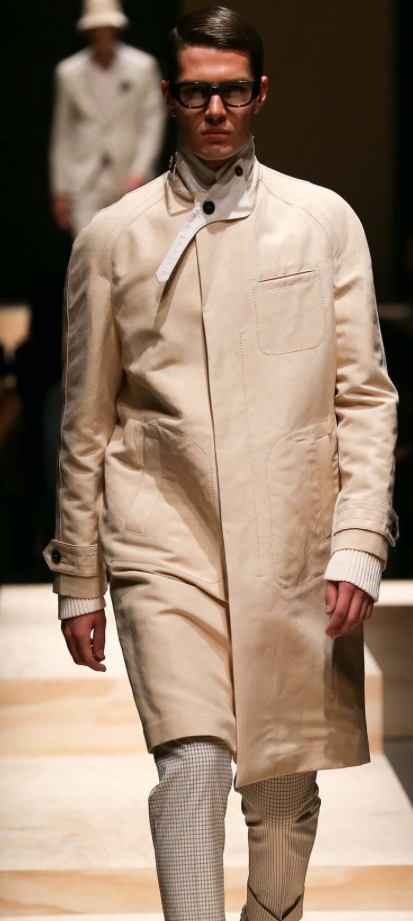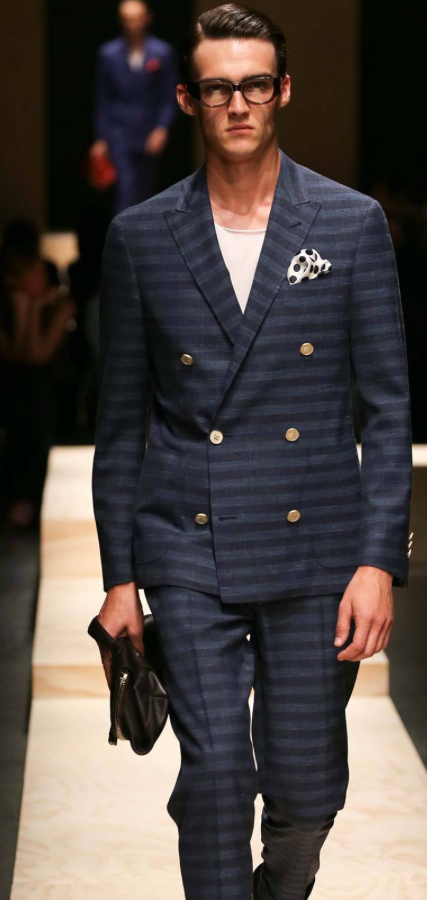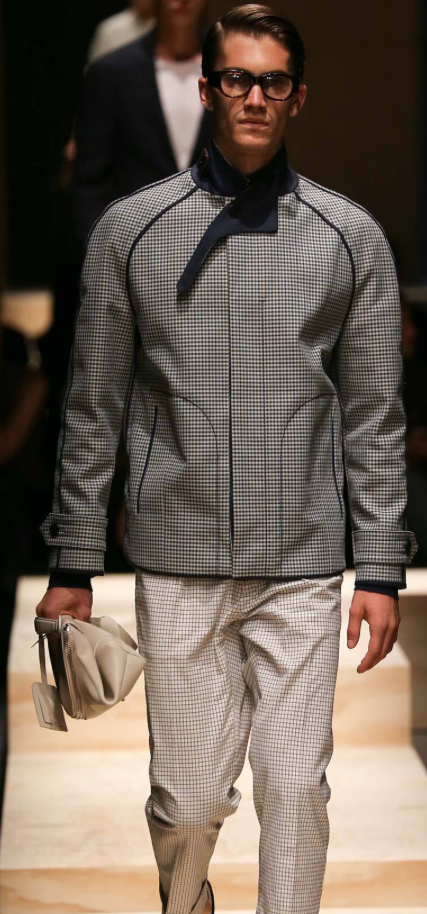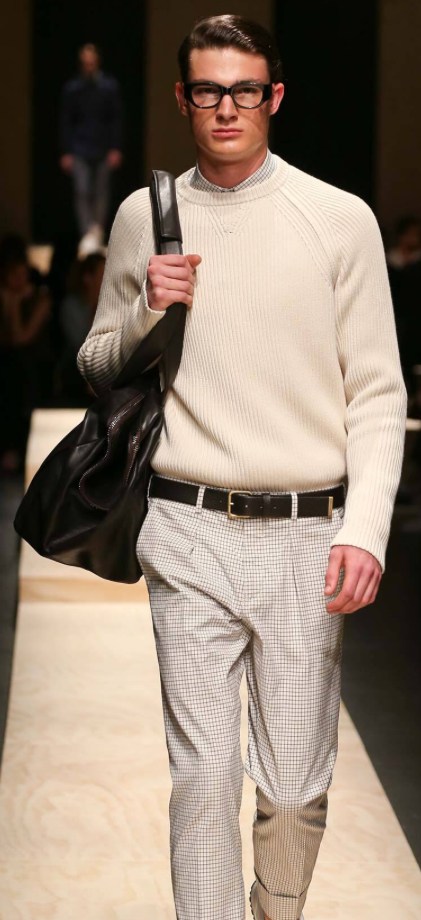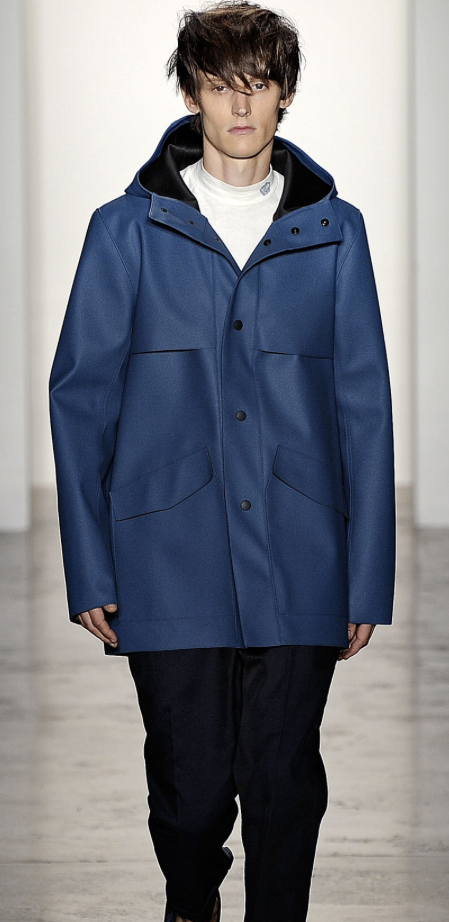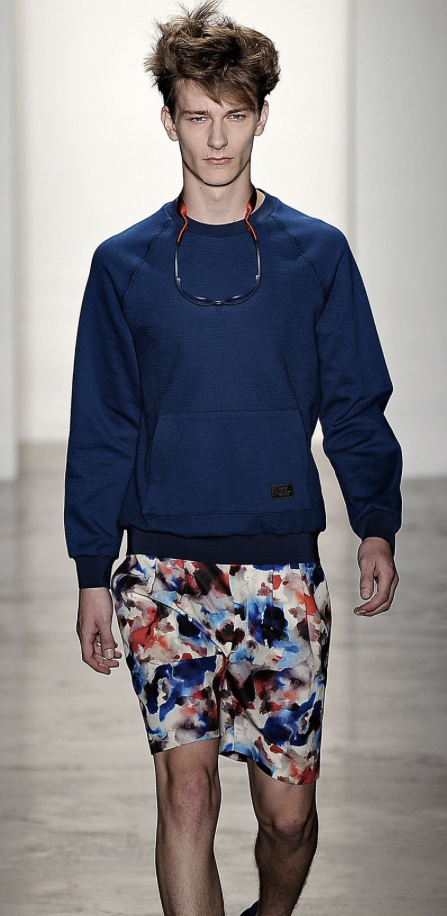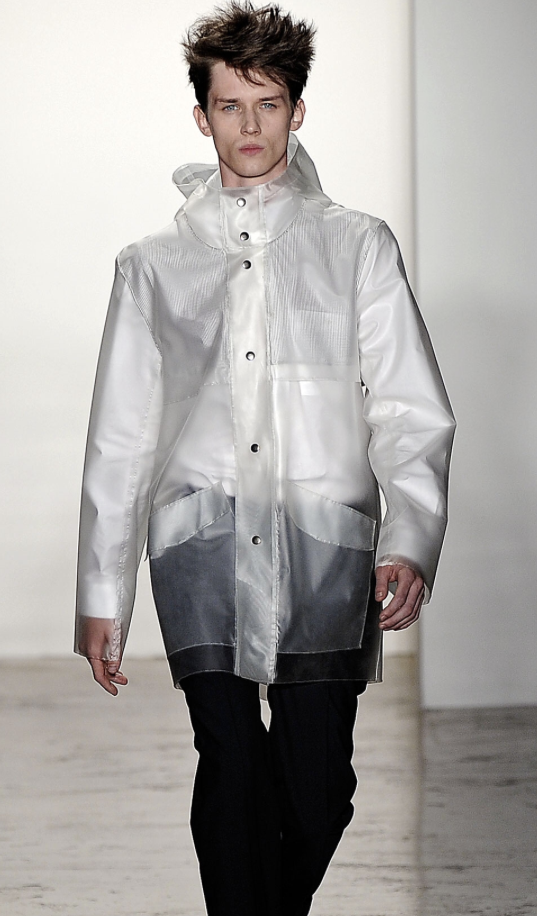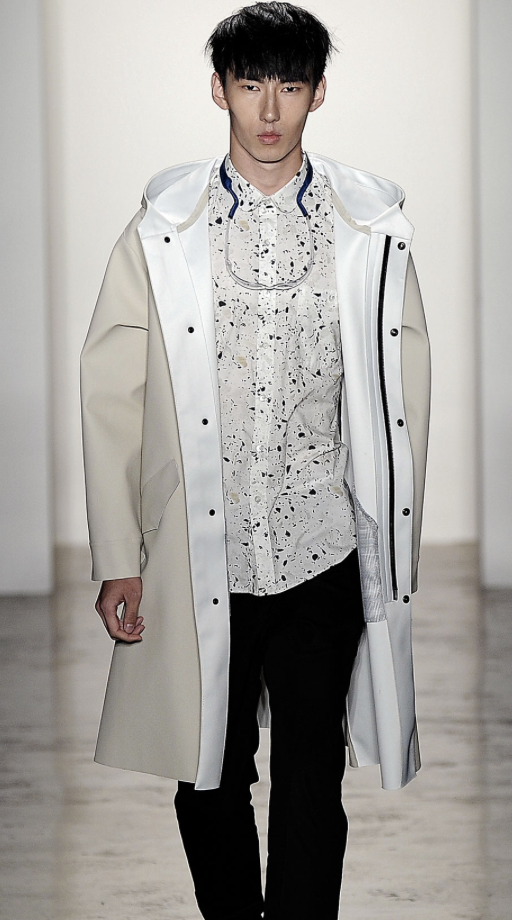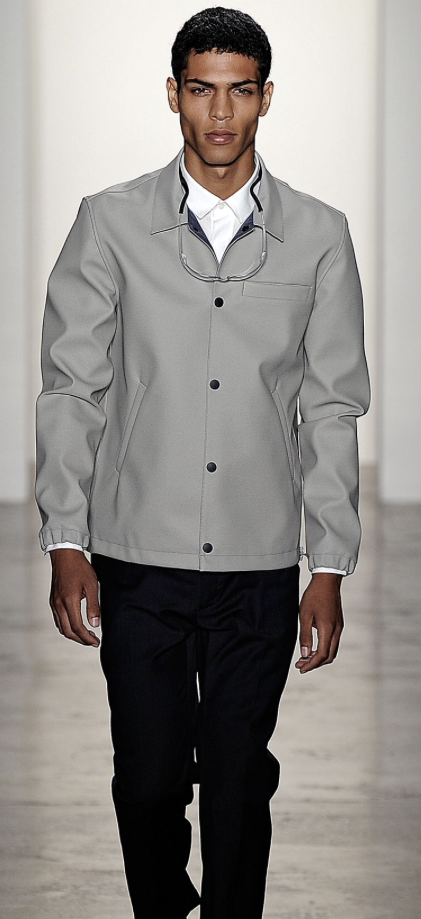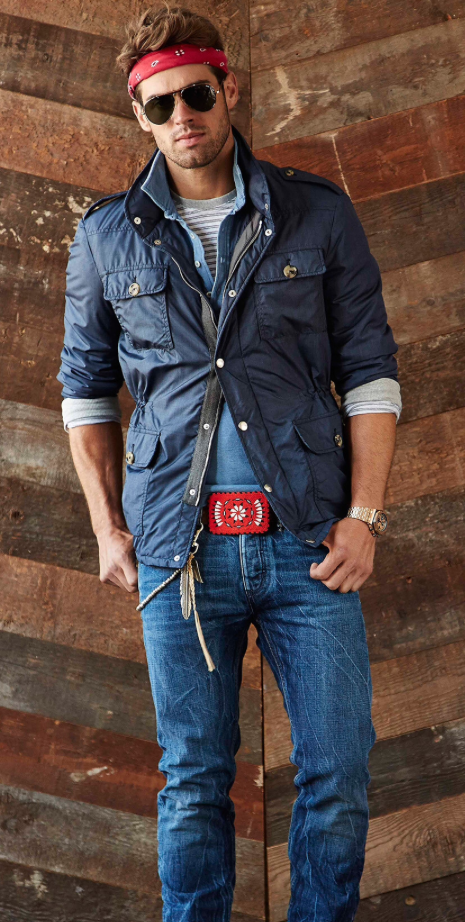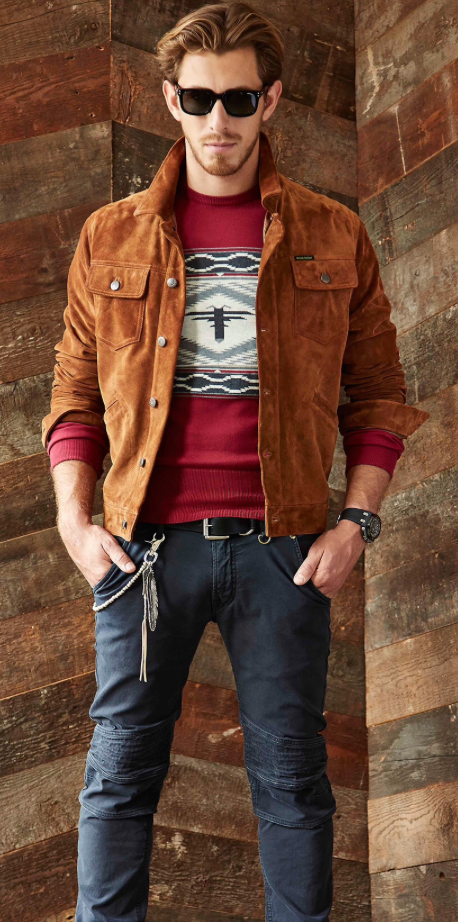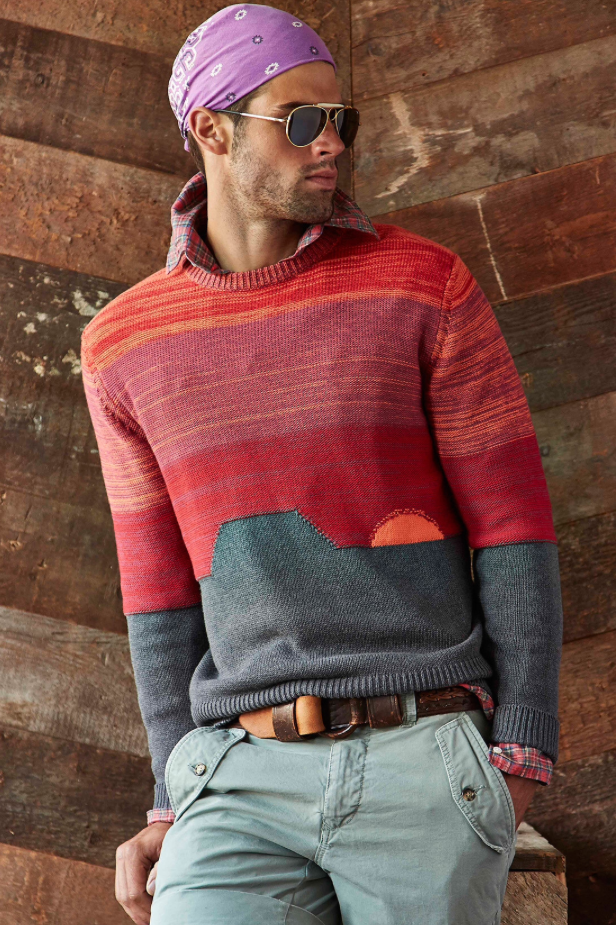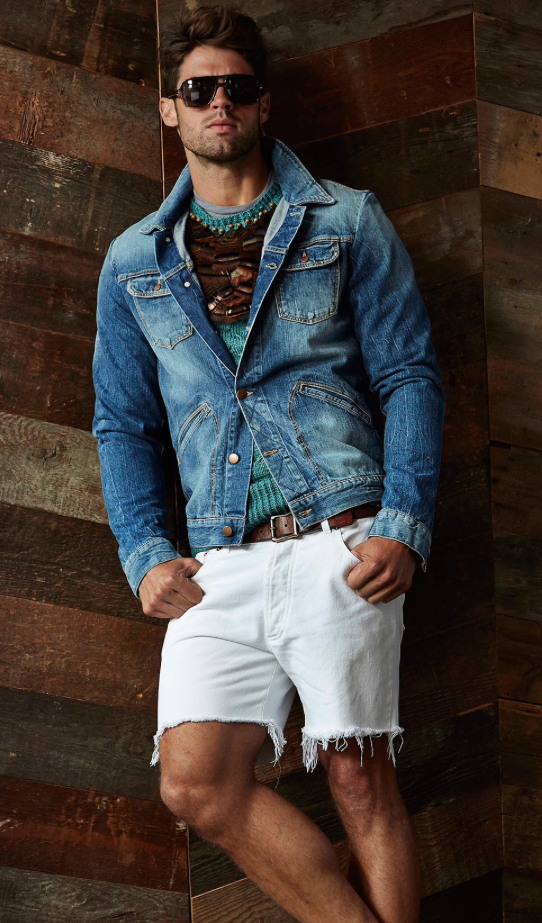From look one, Andrea Pompilio made it clear that this wasn’t going to be just another Canali collection. What followed was a clinic on how a house with such history can update (a buzzword for historically entrenched brands) without compromising.
That first outfit—white sneakers, narrow checked pants with exaggerated cuffs, and a sculptural linen-silk trench—wasn’t what we’ve come to expect from the eighty-year-old label. And that’s exactly why Pompilio, the newly appointed creative consultant, is there. This debut offering from him is a capsule collection that will coexist with Canali’s main line. “I introduced what is Andrea Pompilio to the brand,” said the designer backstage after the show. “For me, this is like an homage to Canali. This is Canali through my eyes.”
Cashmere T-shirts gave suiting a dressed-down look, made distinctive by Pompilio’s keen sense of color—blue and burgundy paired with dusty teal; pale pink and white calfskin sneakers. Details borrowed from sportswear lent a casualness to the clothes. Bermuda shorts with fifties prints, cut above the knee and paired with slouchy socks and sneakers, appeared retro and cool. Calfskin suede dyed molten orange made sharp looks unexpectedly buoyant.
As exciting as this presentation was, it was still just a capsule, suggesting that Canali isn’t quite ready to hand over the reins to a young star just yet. But as with any octogenarian, we can’t expect the brand to move too fast. For now, let’s just hope Pompilio sticks around.
